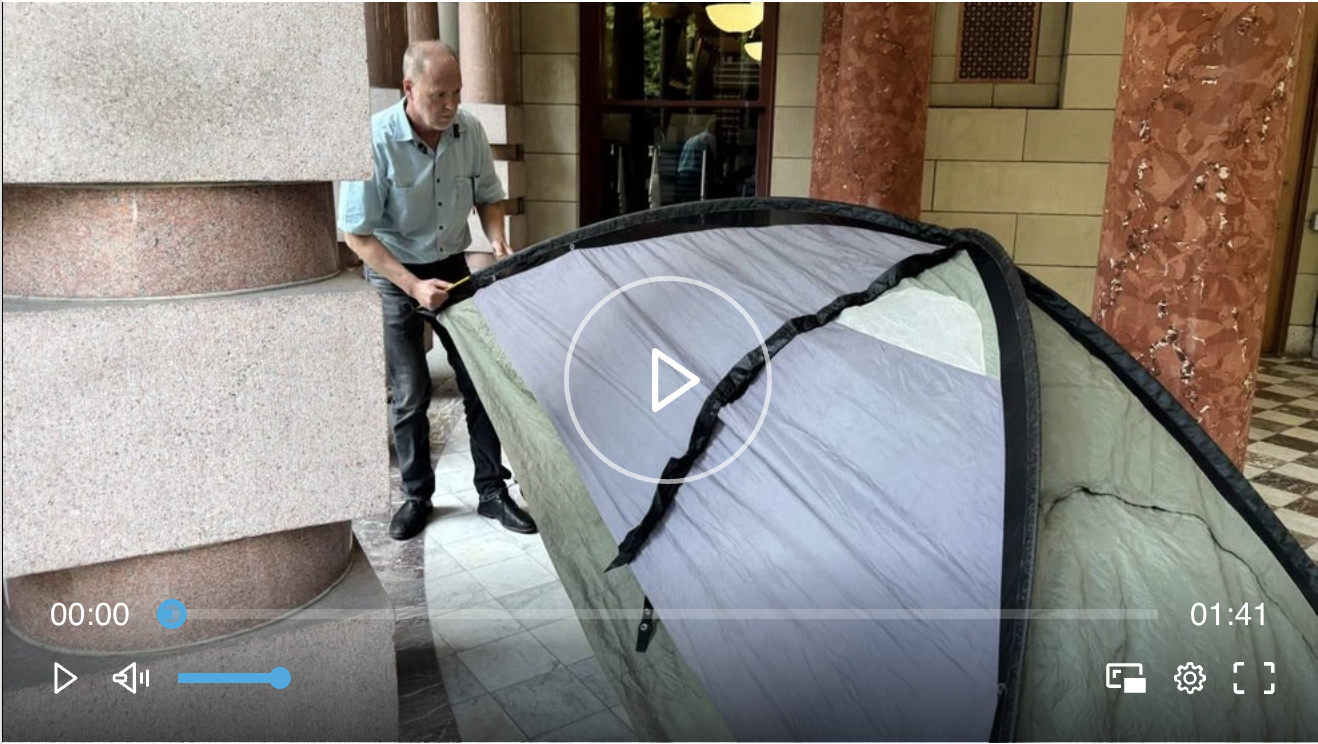PORTLAND, Ore. (KATU) — Tensions over homelessness and shelter policies in Portland escalated Tuesday when a Pearl District property owner staged a protest outside City Hall. His demonstration, however, ended in arrest.
Protest Outside City Hall
Paul Rudinsky, 64, who owns the ORO Apartments in the Pearl District, set up a tent just 15 yards from the front doors of City Hall in the afternoon. He told reporters his action symbolized what he believes residents in his building will soon face: a line of people camping near their homes once a new low-barrier overnight shelter opens next door.
The facility, known as the NW Northrup Shelter, is expected to serve unhoused individuals without requiring ID or sobriety. While drugs cannot be brought into the shelter, clients are not required to remain drug-free to access beds. Rudinsky argued this model would create daytime loitering and add to existing challenges in the neighborhood.
Also Read
Arrest and Trespassing Charge
Rudinsky’s protest was short-lived. According to Multnomah County jail records, he was booked at 5:39 p.m. on a charge of second-degree trespassing. By the time KATU revisited the site around 6:30 p.m., his tent had already been removed.
The Portland Police Bureau has not released further details on the arrest. Rudinsky was released later that evening and insisted to reporters that the incident would not deter him from continuing to protest. “I may approach it differently next time,” he said.
Concerns Over the Shelter
Before his arrest, Rudinsky outlined his concerns about the shelter’s model. Unlike full-service shelters that provide daytime programming, addiction treatment, or case management, the NW Northrup Shelter will operate only overnight.
He fears that during daytime hours, residents will be left with little to do but linger in the surrounding community.
“The Pearl District right now is the worst I’ve seen it in four years,” Rudinsky said. “In the last two to four weeks, it’s gotten exponentially worse. The reason is they’re allowing tents and people to congregate here, even directing them to the site of the coming shelter. People are showing up looking for services, but all they’ll find is an overnight bed with no additional resources.”
Rudinsky also said his apartment tenants are already leaving in anticipation of the shelter opening, citing safety and livability concerns.
A Growing Flashpoint
The debate highlights ongoing tension in Portland between business owners, residents, and city leaders over how best to respond to the homelessness crisis. Low-barrier shelters are designed to reduce barriers for entry, particularly for those who might otherwise avoid shelter due to lack of ID or sobriety requirements. Advocates argue these models provide critical safety and stability for people in need.
Opponents, however, say such facilities—without wraparound services—can concentrate problems in certain neighborhoods without providing long-term solutions.
Looking Ahead
While Rudinsky has vowed to continue speaking out, the shelter project remains on track. The city has defended low-barrier models as essential to addressing homelessness, even as critics push for more comprehensive service centers.
For now, the Pearl District sits at the center of Portland’s broader struggle to balance urgent humanitarian needs with concerns about public safety, livability, and neighborhood stability.












